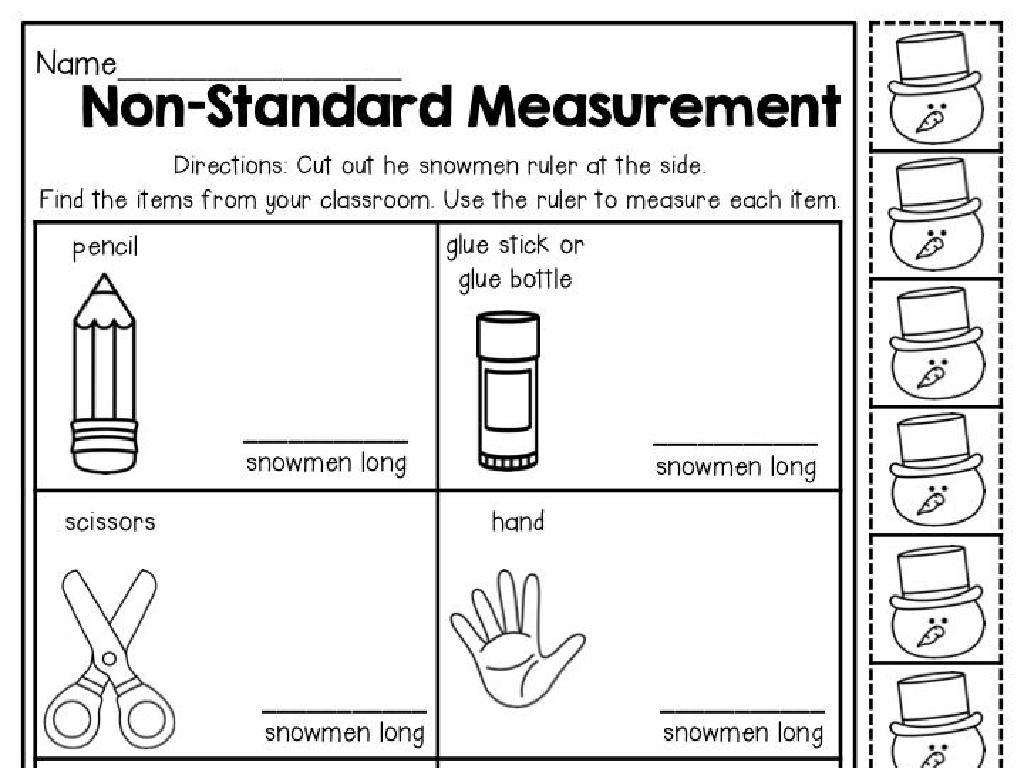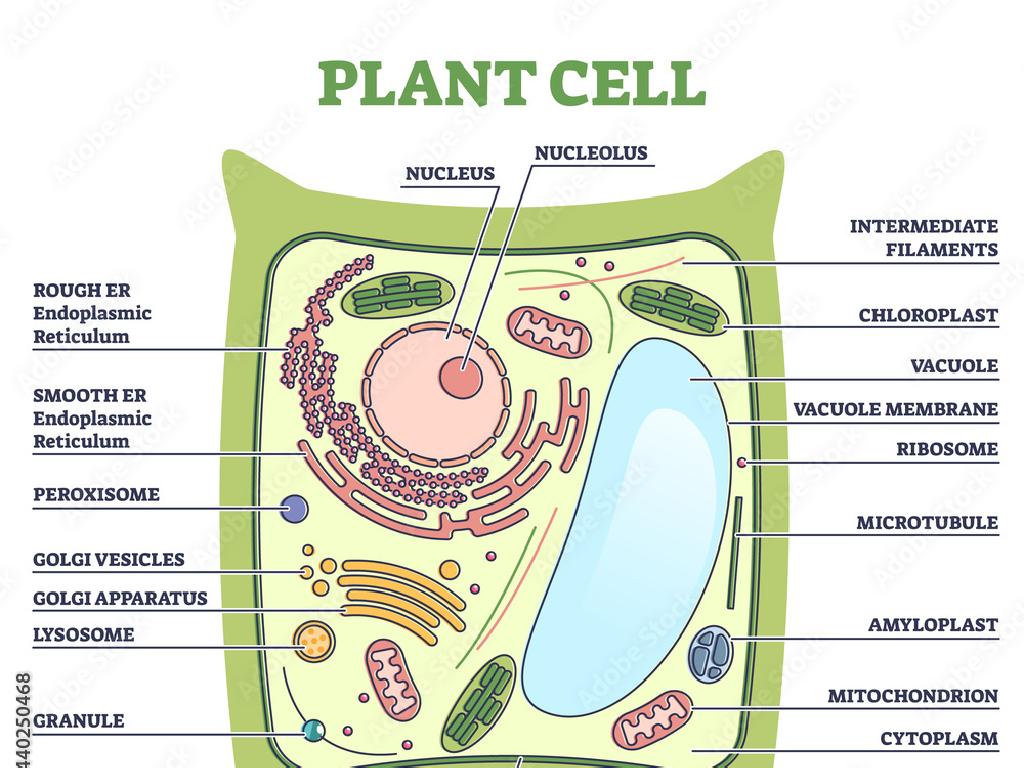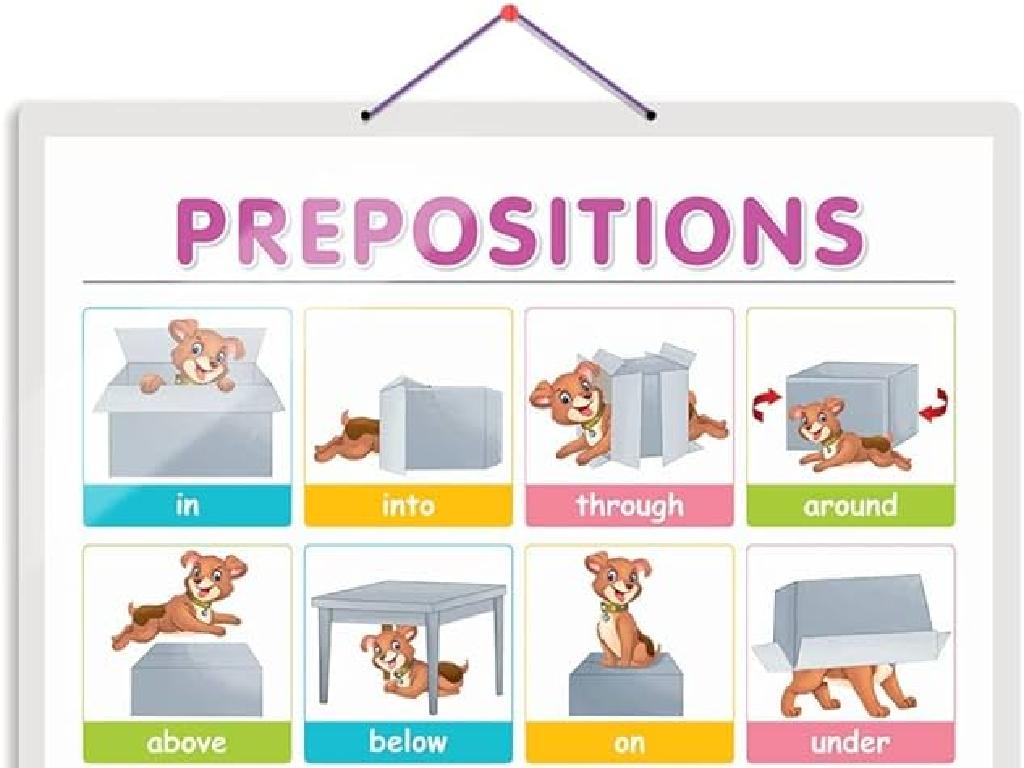Change-Of-State Diagrams: Solid, Liquid, And Gas
Subject: Science
Grade: Second grade
Topic: Changes Of State
Please LOG IN to download the presentation. Access is available to registered users only.
View More Content
Exploring Changes of State
– What are states of matter?
– Matter can be solid, liquid, or gas based on temperature
– Solids: Like ice or a rock
– Solids have a fixed shape and don’t flow
– Liquids: Like water or milk
– Liquids can flow and take the shape of their container
– Gases: Like steam or air
– Gases spread out to fill the space they’re in
|
This slide introduces the concept of states of matter to second-grade students. Begin by explaining that everything around us is made of matter and that matter can exist in different forms, namely solid, liquid, and gas. Use tangible examples like ice, water, and steam to illustrate the changes of state. Explain that the state of matter changes with temperature: heating can turn solids into liquids and liquids into gases. Encourage students to think of examples from their daily lives, such as ice melting into water or water evaporating into steam. This will help them grasp the concept of matter changing from one state to another. The goal is to spark curiosity and prepare them for experiments and observations in future lessons.
Exploring States of Matter
– Matter is everything around us
– Matter comes in 3 forms
– Solid, liquid, and gas are the main forms
– Solids, liquids, and gases
– Solids have a fixed shape; liquids flow; gases fill their container
– Discover what makes each unique
|
This slide introduces the concept of states of matter to second-grade students. Begin by explaining that everything they can touch and feel is made of matter. Matter can exist in three main forms: solid, liquid, and gas. Solids have a definite shape and volume, liquids take the shape of their container but have a definite volume, and gases can change both shape and volume to fill their container. Use familiar examples like ice (solid), water (liquid), and steam (gas) to illustrate the concept. Encourage students to think of other examples and discuss how the same substance, like water, can change between these states.
Exploring Solids in Science
– Solids have a fixed shape
– Solids don’t flow like liquids
– They keep their shape in any container
– Examples of solids: ice, rocks
– Think of things you can stack or build with
|
This slide introduces the concept of solids to second-grade students. Emphasize that solids have a definite shape that does not change, unlike liquids or gases. They do not flow or take the shape of their container, which is a key characteristic that differentiates them from other states of matter. Encourage the students to think of examples of solids in their daily lives, such as ice in their drinks or rocks they find outside. This will help them relate the concept to real-world objects. Ask them to bring examples of solids for the next class or draw pictures of solids they can think of, fostering engagement and reinforcing the concept.
Exploring Liquids
– Liquids can flow
– They take container’s shape
– Liquids have a flat surface
– When undisturbed, the surface of a liquid is level
– Examples of liquids
– Water, milk, juice are liquids we drink
|
This slide introduces the basic properties of liquids to second-grade students. Emphasize that liquids, unlike solids, can move around and change shape to fit inside whatever they are poured into. Highlight that even though liquids can flow and take different shapes, the surface of a still liquid is always flat, not bumpy or angled. Engage the class by asking them to name some common liquids they encounter every day, like water and milk, and discuss their observations of these liquids at home or in the classroom. This will help them connect the concept to real-life experiences and better understand the properties of the state of matter.
Exploring Gases Around Us
– Gases are invisible friends
– Gases expand to fill space
– Like when a balloon gets big as we fill it!
– Examples of gases we know
– Air we breathe, helium in balloons
– Gases in balloons and bubbles
– Helium makes balloons float up high!
|
This slide introduces the concept of gases to second-grade students. Emphasize that gases are a state of matter that is all around us, even though we can’t see them. Explain that gases will spread out to fill the whole space inside of a container, such as a balloon or a room. Ask the students to name some gases they know, like the air we breathe or helium, which is used to fill balloons. You can demonstrate this with a balloon, showing how it expands as it’s filled with air or helium. This visual will help them understand the concept of gases occupying space. Encourage the children to think of other examples where they have seen gases at work, like bubbles in water.
Change-of-State Diagrams: Water’s Journey
– Matter changes states
– Freezing turns water to ice
– Water becomes solid ice at 0°C
– Melting turns ice to water
– Ice becomes liquid water above 0°C
– Boiling turns water to steam
– Water becomes gas steam at 100°C
|
This slide introduces the concept of matter changing states with the example of water transitioning between solid, liquid, and gas. It’s crucial to explain that these changes happen because of temperature changes. When water freezes at 0 degrees Celsius, it becomes solid ice. When ice is warmed up, it melts back into liquid water. Further heating causes water to boil and turn into steam, which is a gas. Use real-life examples like freezing water in a tray to make ice cubes or watching water boil into steam. These visual examples will help second graders grasp the concept of state changes in matter.
Let’s See It in Action: Melting Ice!
– Observe solid ice melting
– Ice turns into liquid water
– Watch and see the ice become water!
– Melting ice changes shape
– Notice how the ice adapts to its new container’s shape
– Experiment: Ice to Water
|
This slide is for a classroom experiment where students will observe the process of a solid (ice) changing into a liquid (water). Begin by explaining that solids have a fixed shape, while liquids take the shape of their container. Show the students an ice cube and ask them to predict what will happen when it’s left out at room temperature. As the ice melts, point out the change in state from solid to liquid and discuss how the ice now fills the bottom of the container, taking its shape. This experiment helps students understand the concept of matter changing states due to temperature changes. Prepare to answer questions about why the ice melts and what conditions speed up or slow down the melting process. Have towels ready for any spills and ensure each student gets a chance to observe closely.
Class Activity: Melting Magic
– Observe an ice cube melting
– Draw the melting process
– Capture each stage as ice becomes water
– Discuss observations with peers
– Understand solid to liquid change
– Learn how heat turns ice (solid) into water (liquid)
|
This activity is designed to help second-grade students visually understand the concept of a solid changing into a liquid through the process of melting. Provide each student with an ice cube and a paper towel or plate to observe the melting. Encourage them to draw the ice cube at the start, during, and after it has melted to capture the transition stages. After the activity, facilitate a discussion where students can share their drawings and observations, highlighting the role of temperature in changing states from solid to liquid. This will reinforce their understanding of the states of matter and the conditions that lead to these changes. Possible variations of the activity could include measuring the time it takes for the ice to melt, comparing ice melting in different room temperatures, or even using colored ice cubes to make the process more visually engaging.
Wrapping Up: States of Matter
– Explored solids, liquids, gases
– Learned how matter changes state
– Heat can turn ice to water, and water to steam
– You’re all junior scientists now!
– Keep observing the world around you!
– Notice water, ice, and steam in daily life
|
Today’s lesson provided the students with foundational knowledge about the three states of matter: solids, liquids, and gases. We discussed how matter can change from one state to another through the process of heating or cooling, such as water turning into ice or steam. The students did an excellent job engaging with the content and participating in discussions. As a concluding note, encourage the students to continue observing these changes in their environment, like noticing the steam from a hot cup of cocoa or the melting of an ice cream cone on a sunny day. This will reinforce their understanding and spark curiosity about the science in their everyday lives.






